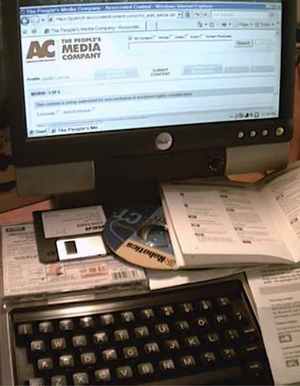Writing a review of computer software you are using or have tried can be a good way to earn money on Associated Content, as well as computer magazines and other websites which pay for software reviews, or to add content to your own website. It can also be considered a good way to decrease the cost of buying software, if you know that some or all of the price will be earned back by writing a review. Before writing your review, try using nichebot.com or nichebotclassic.com to determine if many people are searching for information on the piece of software in question, and conduct a search to make sure too many people haven’t already reviewed it. Here are some tips on what to include when writing a software review…
CAPABILITIES: After describing what type of software/program you are reviewing, provide a detailed summary of its features and capabilities. If it is an application, mention if there are multiple purposes it can be used for. Look through any drop-down menus the program has, to see if there are features you have overlooked.
QUALITY, SPEED: If applicable, describe the quality of the graphics and/or sound featured in the software. Be sure to indicate if the program runs too slowly (or too quickly, as can occur with some older software) on your computer, and mention your computer’s processor speed (if you don’t know this, you can check it in Windows XP by clicking “System Information” under “System Tools”, in the “Accessories” Start menu, and then looking for ___MHz on the “Processor” row). To be fair, don’t run any other programs at the same time, and make sure no virus scans are running in the background. Try the software on more than one computer (with a different processor and/or operating system), if possible, and describe the difference in performance. Mention any errors or other problems you encounter in the software, but remember that your computer’s particular configuration may be partially to blame.
ACCESSORIES: Mention any computer accessories which you feel are beneficial for using the application or game (such as a particular joystick). If relevant, try using the software without this accessory (for example, play a game with the mouse or keyboard instead of a joystick or gamepad you normally use) and tell readers if its performance is still acceptable.
SYSTEM REQUIREMENTS: List the system requirements (OS, RAM/memory, processor, etc.) for using the program, in your review. This is usually printed on the CD-ROM, CD case, or the box it came in. If the requirements are fairly high, consider recommending a similar program you are familiar with for people with older computers. If the program was made before Windows XP became available and was designed for Windows 95 or 98, let readers know if it works properly in XP (if you have it), as some older software does not.
INSTRUCTIONS: If the program comes with an instruction manual, briefly review its usefulness and tell readers if you think it is necessary (for if the readers are considering to purchase it used from someone who has misplaced the manual); be sure to mention if codes or other information from the manual are required to use the program. On the other hand, if the instructions are contained on a CD, indicate how convenient they are to use and if they provide enough detail.
PRICE/SHOPPING: Finally, provide details on where the software can be purchased and approximately how much it will cost. You can also give information on similar programs in different price ranges, with a brief comparison of their cost and features with the software you are reviewing.
Following these tips should help you write an effective and thorough software review.

